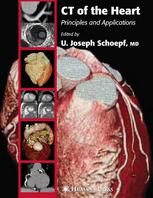

Most ebook files are in PDF format, so you can easily read them using various software such as Foxit Reader or directly on the Google Chrome browser.
Some ebook files are released by publishers in other formats such as .awz, .mobi, .epub, .fb2, etc. You may need to install specific software to read these formats on mobile/PC, such as Calibre.
Please read the tutorial at this link: https://ebookbell.com/faq
We offer FREE conversion to the popular formats you request; however, this may take some time. Therefore, right after payment, please email us, and we will try to provide the service as quickly as possible.
For some exceptional file formats or broken links (if any), please refrain from opening any disputes. Instead, email us first, and we will try to assist within a maximum of 6 hours.
EbookBell Team

4.3
28 reviewsThe introduction of fast ECG-synchronized computed tomography (CT) techniques enables imaging of the heart with a combination of speed and spatial resolution unparalleled by other noninvasive imaging modalities. Applying these modalities for the evaluation of coronary artery disease is a topic of active current research. Coronary artery calcium measurements are investigated as a marker for cardiac risk stratification. With contrast-enhanced CT coronary angiography, coronary arteries can be visualized with unprecedented detail, so that noninvasive stenosis assessment appears within reach. With increasing accuracy CT enables evaluation of coronary artery bypass grafts and stents. The cross-sectional nature of CT may to some degree allow noninvasive assessment of the coronary artery wall. CT for evaluating cardiac perfusion, motion, and viability is being investigated.
In CT of the Heart, leading radiologists, cardiologists, physicists, engineers, and basic and clinical scientists from around the world survey the full scope of current developments, research, and scientific controversy regarding principles and applications of cardiac CT. Richly illustrated with numerous black-and-white and color images, the book discusses the interpretation of CT of the heart in a variety of clinical, physiologic, and pathologic applications. The authors emphasize current state-of-the-art uses of computed tomography, but also examine emerging developments at the horizon. They review the technical basis of CT image acquisition as well as the tools for image visualization and analysis.
Meticulous and comprehensive, CT of the Heart authoritatively defines the current status of computed tomography of the heart, offering a truly balanced view of its technology, applications, significance, and future potential.